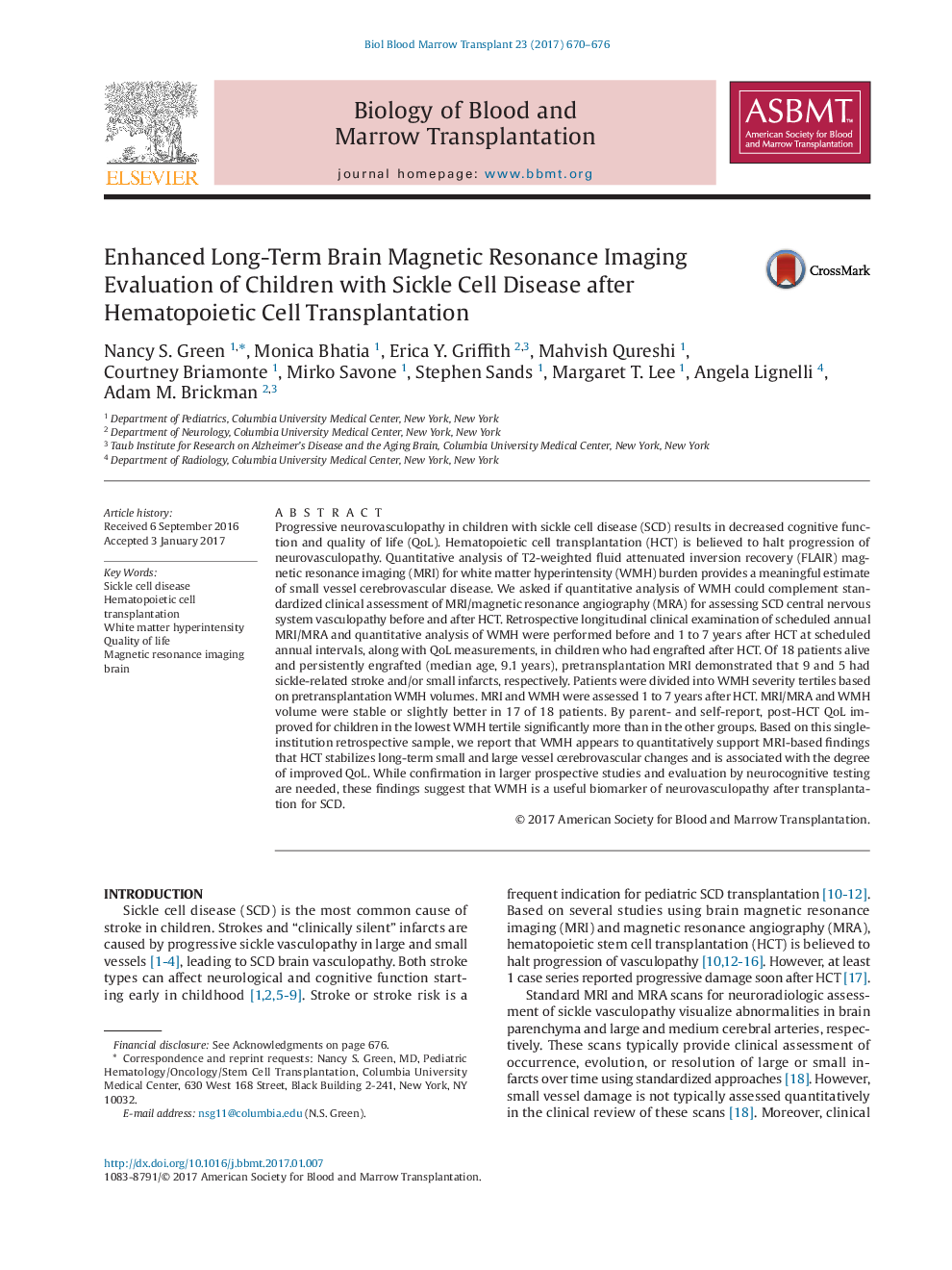| کد مقاله | کد نشریه | سال انتشار | مقاله انگلیسی | نسخه تمام متن |
|---|---|---|---|---|
| 5524424 | 1546242 | 2017 | 7 صفحه PDF | دانلود رایگان |
- Progressive neurovasculopathy in children with sickle cell disease results in decreased cognitive function and quality of life
- Hematopoietic cell transplantation is believed to halt progression of neurovasculopathy
- Based on this single-institution retrospective sample, we report that white matter hyperintensity appears to quantitatively support magnetic resonance imaging-based findings that hematopoietic cell transplantation stabilizes long-term small and large vessel cerebrovascular changes and is associated with degree of improved quality of life
- If confirmed, these findings suggest that white matter hyperintensity is a useful biomarker of neurovasculopathy after transplantation for sickle cell disease
Progressive neurovasculopathy in children with sickle cell disease (SCD) results in decreased cognitive function and quality of life (QoL). Hematopoietic cell transplantation (HCT) is believed to halt progression of neurovasculopathy. Quantitative analysis of T2-weighted fluid attenuated inversion recovery (FLAIR) magnetic resonance imaging (MRI) for white matter hyperintensity (WMH) burden provides a meaningful estimate of small vessel cerebrovascular disease. We asked if quantitative analysis of WMH could complement standardized clinical assessment of MRI/magnetic resonance angiography (MRA) for assessing SCD central nervous system vasculopathy before and after HCT. Retrospective longitudinal clinical examination of scheduled annual MRI/MRA and quantitative analysis of WMH were performed before and 1 to 7 years after HCT at scheduled annual intervals, along with QoL measurements, in children who had engrafted after HCT. Of 18 patients alive and persistently engrafted (median age, 9.1 years), pretransplantation MRI demonstrated that 9 and 5 had sickle-related stroke and/or small infarcts, respectively. Patients were divided into WMH severity tertiles based on pretransplantation WMH volumes. MRI and WMH were assessed 1 to 7 years after HCT. MRI/MRA and WMH volume were stable or slightly better in 17 of 18 patients. By parent- and self-report, post-HCT QoL improved for children in the lowest WMH tertile significantly more than in the other groups. Based on this single-institution retrospective sample, we report that WMH appears to quantitatively support MRI-based findings that HCT stabilizes long-term small and large vessel cerebrovascular changes and is associated with the degree of improved QoL. While confirmation in larger prospective studies and evaluation by neurocognitive testing are needed, these findings suggest that WMH is a useful biomarker of neurovasculopathy after transplantation for SCD.
Journal: Biology of Blood and Marrow Transplantation - Volume 23, Issue 4, April 2017, Pages 670-676
